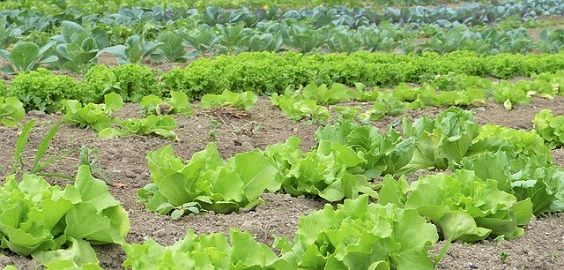Discovering the Differences In Between Commercial Farming and Subsistence Farming Practices
The dichotomy between industrial and subsistence farming methods is noted by differing objectives, functional ranges, and resource application, each with profound ramifications for both the atmosphere and culture. On the other hand, subsistence farming emphasizes self-sufficiency, leveraging typical methods to sustain home needs while nurturing community bonds and social heritage.
Economic Purposes
Financial goals in farming practices usually dictate the techniques and scale of operations. In industrial farming, the primary economic purpose is to take full advantage of revenue.
In contrast, subsistence farming is primarily oriented in the direction of meeting the instant needs of the farmer's family members, with surplus manufacturing being very little. The financial purpose below is typically not profit maximization, but rather self-sufficiency and threat minimization. These farmers normally run with limited resources and depend on conventional farming methods, customized to local ecological conditions. The main goal is to ensure food safety and security for the family, with any type of excess fruit and vegetables offered in your area to cover fundamental necessities. While business farming is profit-driven, subsistence farming is focused around sustainability and resilience, reflecting a fundamentally various set of financial imperatives.

Scale of Operations
The distinction in between business and subsistence farming becomes specifically obvious when considering the scale of procedures. The range of industrial farming allows for economic climates of range, resulting in decreased expenses per unit with mass production, raised performance, and the capacity to invest in technical developments.
In plain comparison, subsistence farming is normally small-scale, focusing on producing simply sufficient food to fulfill the instant demands of the farmer's household or regional community. The land area involved in subsistence farming is typically restricted, with less accessibility to modern innovation or mechanization.
Resource Use
Resource utilization in farming techniques exposes significant distinctions in between commercial and subsistence strategies. Industrial farming, defined by large-scale procedures, commonly employs advanced technologies and mechanization to maximize the use of sources such as land, water, and fertilizers. These methods enable improved effectiveness and greater efficiency. The focus gets on making the most of results by leveraging economic situations of scale and deploying resources strategically to make sure consistent supply and productivity. Precision agriculture is significantly adopted in business farming, making use of data analytics and satellite technology to monitor plant wellness and maximize source application, further improving yield and resource performance.
In comparison, subsistence farming runs on a much smaller range, mostly to satisfy the immediate requirements their website of the farmer's home. Source use in subsistence farming is commonly limited by economic restrictions and a reliance on typical strategies.
Environmental Impact

Alternatively, subsistence farming, practiced on a smaller scale, generally utilizes standard techniques that are a lot more in harmony with the surrounding atmosphere. Crop turning, intercropping, and natural fertilization are usual, promoting dirt wellness and minimizing the demand for artificial inputs. While subsistence farming generally has a lower ecological impact, it is not without difficulties. Over-cultivation and inadequate land monitoring can result in dirt erosion and deforestation sometimes.
Social and Cultural Ramifications
Farming techniques are deeply linked with the social and social fabric of neighborhoods, affecting and mirroring their worths, traditions, and economic structures. In subsistence farming, the focus is on cultivating adequate food to fulfill the immediate demands of the farmer's family, frequently fostering a strong feeling of community and shared obligation. Such practices are deeply rooted in neighborhood practices, with knowledge passed down with generations, consequently protecting cultural heritage and strengthening common ties.
Conversely, business farming is primarily driven by market needs and productivity, usually causing a change in the direction of monocultures and large operations. This approach can bring about the over at this website disintegration of standard farming methods and social identities, as neighborhood customizeds and understanding are supplanted by standard, commercial methods. The focus on performance and profit can often diminish the social cohesion discovered in subsistence areas, as economic purchases change community-based exchanges.
The dichotomy in between these farming techniques highlights the wider social effects of agricultural options. While subsistence farming sustains cultural continuity and neighborhood connection, industrial farming straightens with globalization and economic development, frequently at the price of standard social frameworks and multiculturalism. commercial farming vs subsistence farming. Stabilizing these aspects stays an important challenge for lasting agricultural advancement
Final Thought
The assessment of industrial and subsistence farming methods exposes considerable differences in goals, scale, resource use, environmental influence, and social implications. Alternatively, subsistence farming stresses self-sufficiency, utilizing conventional methods and neighborhood resources, thus promoting social conservation and area communication.
The dichotomy between industrial and subsistence farming methods is marked by differing purposes, functional scales, and source use, each with profound effects for both the setting and society. While commercial farming is profit-driven, subsistence farming is centered around sustainability and strength, mirroring a basically various collection of economic imperatives.
The distinction in between industrial and subsistence farming becomes specifically obvious when thinking about the range of procedures. While subsistence farming sustains cultural connection and community connection, commercial farming lines up with globalization and economic development, often at the expense of traditional social frameworks and social diversity.The examination of industrial and subsistence farming techniques reveals considerable differences in purposes, scale, source use, ecological impact, and social ramifications.
Comments on “Benefits and Challenges of Commercial Farming vs Subsistence Farming Discussed”